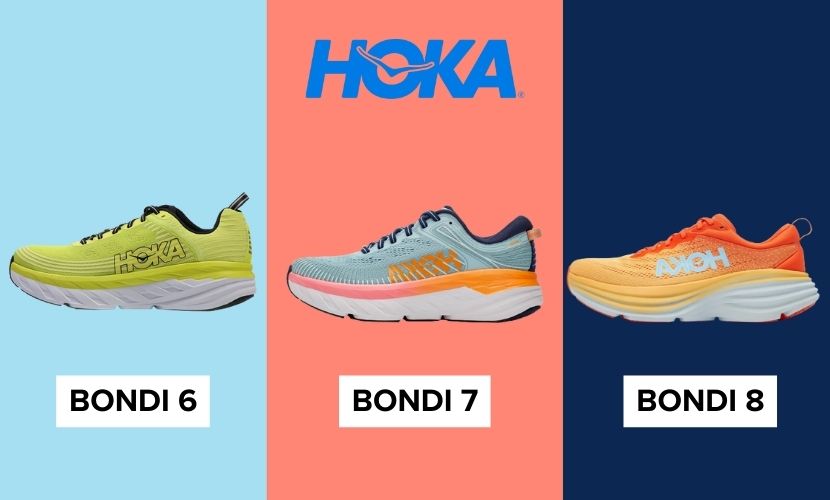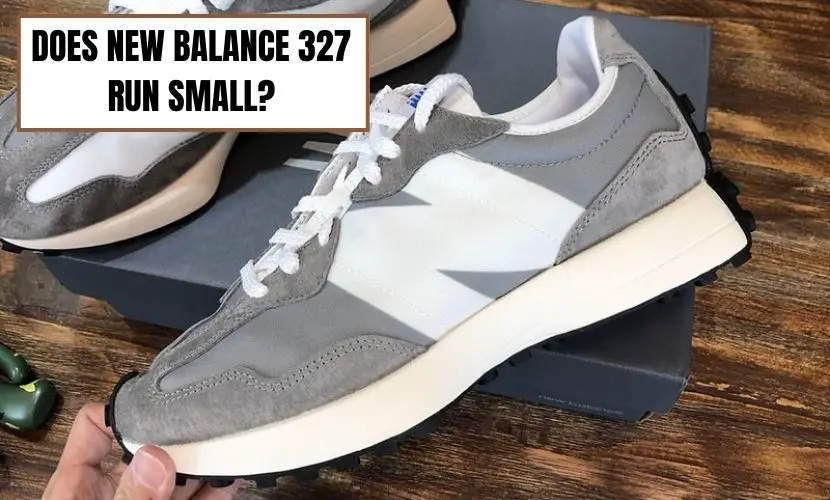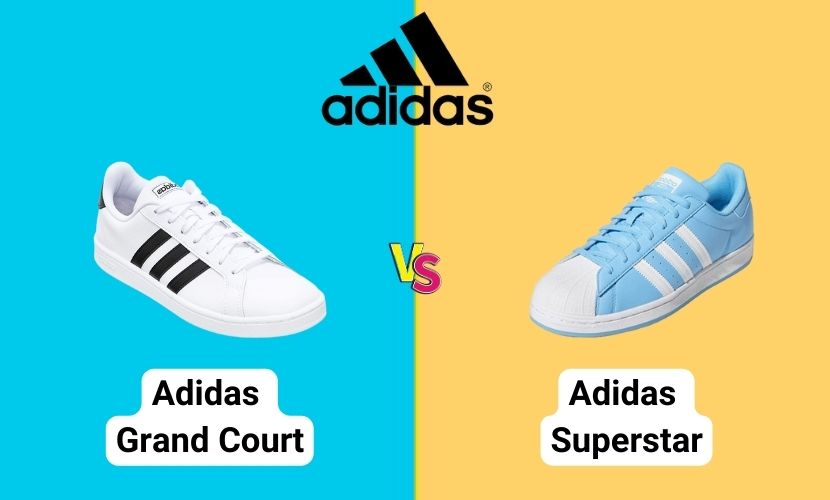Regarding selecting a running shoe, the choices can be overwhelming. Hoka, a renowned brand among athletes, provides two stability shoes that are often contrasted: the Gaviota and the Arahi. On the contrary, both shoes offer similar attributes, and they also have their dissimilarities.
The Hoka Gaviota is a steady shoe that provides a stabilized padding system. It is structured for runners who need additional support and ease. Conversely, the Hoka Arahi is a reactive cushioning shoe that gives a sturdy ride. It is adaptable for athletes who require stability but also desire a more reactive shoe.
Their weight is among the greatest dissimilarities between the Gaviota and the Arahi. The Gaviota is more heavier than the Arahi, which may be a factor for several athletes. Furthermore, the Gaviota contains more arch aid, creating it a finer choice for those with greater arches. The Arahi, on the other side, is less expensive than the Gaviota, which may be a determining factor for some athletes on a budget.
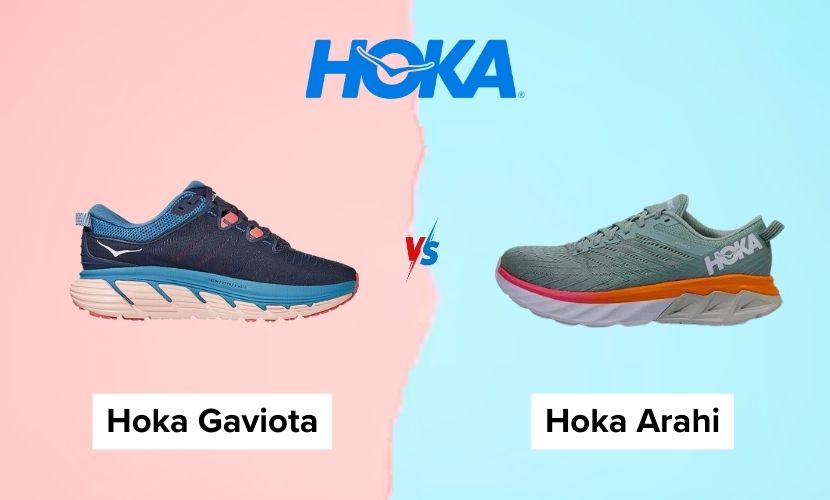
Feature Table: Hoka Gaviota Vs Hoka Arahi
| Feature | Hoka Gaviota | Hoka Arahi |
| Weight | Heavier | Lighter |
| Cushioning | More cushioning | Responsive cushioning |
| Stability | More stability | Moderate stability |
| Support | High arch support | Moderate arch support |
| Design | Traditional pattern | Sleek and modern design |
| Comfort | Balanced padding | Reactive cushioning |
| Durability | Durable materials | Durable materials |
| Performance | Greater cushioning | Responsive ride |
| Price | More expensive | Slightly more affordable |
Overview of Hoka Gaviota
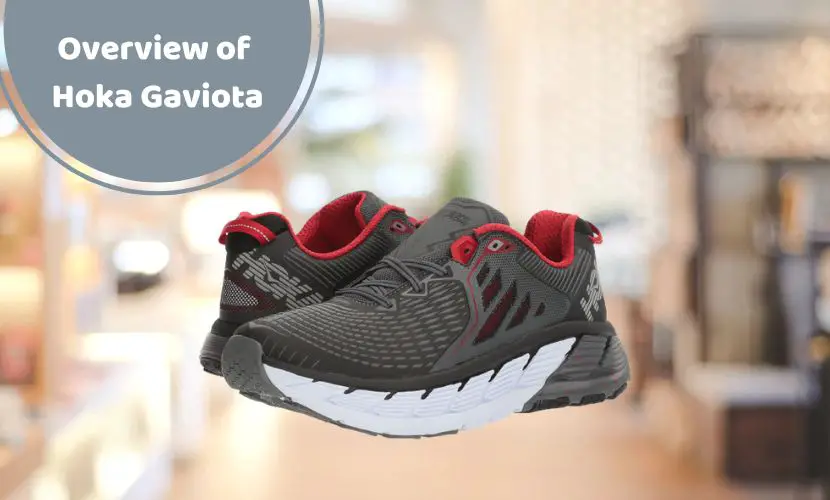
The Hoka Gaviota is a stout running shoe structured to avert supination and inward spin. It offers Hoka’s J-Frame, which gives extra support while running. The shoe is heavier and has more cushion volume than its counterpart, the Hoka Arahi, weighing approximately 11.3oz.
The Gaviota’s upper is engineered of constructed mesh, which gives permeability and support. The shoe’s tongue is cushioned, offering extraordinary comfort and averting any discomfort caused by laces. The shoe’s heel counter is manufactured to offer a safe fit, preventing any skidding or sliding during runs.
The Gaviota’s midsole is structured of EVA foam, which gives padding and support. The shoe’s J-Frame is manufactured of firmer EVA foam, offering additional support and firmness. The shoe’s outsole is rubber, giving durability and grip on different surfaces.
Overall, the Hoka Gaviota is a dependable and snug stability running shoe structured for runners who need additional support during their runs. It offers a secure fit, padding, and stability, making it an outstanding option for athletes requiring a reliable shoe for regular training runs.
Overview of Hoka Arahi
The Hoka Arahi is a rugged running shoe structured for athletes who overpronate. It is a segment of Hoka’s stability shoe lineup, together with the Gaviota. The Arahi is popular for its feathery design and reactive cushioning, creating it a famous option for runners who desire support without sacrificing speed.
One of the emerging attributes of the Arahi is Hoka’s J-Frame technique, which is manufactured to offer extra support for the foot. The J-Frame is a resistant density foam that covers around the heel and elongates through the midfoot, offering stability and aid where required most.
Regarding weight, the Arahi is one of the flexible stability shoes in the industry, weighing in at approximately 9.7oz for men and 8.2oz for women. This creates it an excellent option for athletes who desire a sturdy shoe without feeling weighed down.
The Arahi also offers a permeable netting upper that aids in maintaining feet cool, fresh, and dry during long runs. The shoe’s Ortholite insole gives extra padding and support; on the contrary, the early-stage Meta-Rocker design supports promote an even and efficient stride.
Overall, the Hoka Arahi is a firm option for athletes who want a delicate, stable shoe with sufficient support and padding. Its J-Frame technology, reactive cushioning, and feathery pattern create it a famous option for athletes of all standards.
Comparative Analysis
Design and Aesthetics
The Hoka Gaviota and Arahi are firm shoes with similar patterns and aesthetics. Both shoes offer a 5mm drop, which is general for Hoka shoes. However, the Gaviota is moderately more heavier than the Arahi, weighing approximately 11.3oz contrasted to the Arahi’s 9.7oz. The Gaviota also has more computed “Spring” in the shoe, 3mm in men’s edition and 2mm in women’s.
Regarding aesthetics, both shoes have a slender and modern look. The Gaviota contains a more customary running shoe pattern; on the other side, the Arahi has a more versatile and futuristic pattern.
Comfort and Fit
The Hoka Gaviota and Arahi offer distinct standards of comfort and fit. The Gaviota contains balanced padding, while the Arahi comprises more reactive cushioning. The Gaviota also has more arch aid than the Arahi, creating it more adaptable for those with moderate to high arches.
Both shoes have a broad toe box, which permits for more natural toe splay and a snug fit. However, some wearers have mentioned that the Arahi’s toe box is moderately tighter than the Gaviota’s.
Durability
The Hoka Gaviota and Arahi are designed with top-quality materials and constructed to last. The outsole of both shoes is manufactured with durable rubber, which gives remarkable traction and durability.
However, some wearers have mentioned that the Gaviota’s upper material is easier-wearing than the Arahi’s. The Gaviota’s upper material is designed with a mushier netting material, which may deteriorate faster than the Arahi’s more hard-wearing upper material.
Performance and Functionality
The Hoka Gaviota and Arahi are outstanding stability shoes that give different standards of performance and practicality. The Gaviota is popular for its greater cushioning and squishier ride, creating it perfect for longer runs and those who prioritize a more padded shoe.
The Arahi, on the other side, is admired for its steadiness and reactiveness, creating it perfect for shorter runs and those who prioritize a more responsive shoe. Both shoes offer remarkable stability and aid, perfect for overpronators and those who require additional support during their runs.
Material Comparison
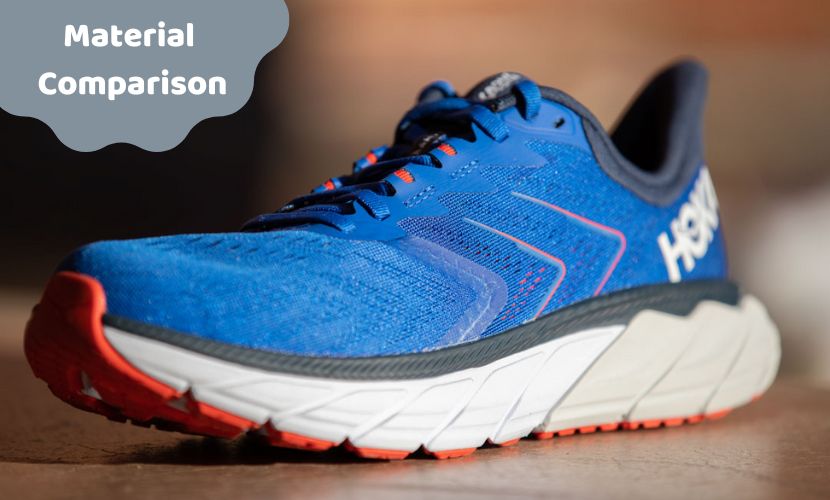
Several remarkable differences exist concerning the material of the Hoka Gaviota and Arahi. This part will break down the material of every shoe in the matter of the insole, midsole, outsole, and upper.
Insole
The Gaviota and Arahi offer a portable insole with extra padding and support. However, the insole of the Gaviota is heavier and more cushioned than the Arahi’s insole. This may create the Gaviota more snug for those who require additional cushioning.
Midsole
The Gaviota and Arashi’s midsole is designed of a dual-density EVA foam. This shows that the foam is sturdy in the heel and mushier in the forefoot, offering a balance of padding and support.
However, the Gaviota contains a moderately thicker midsole than the Arahi, which may make it more adaptable for those requiring extra steadiness.
Outsole
The outsole of the Gaviota and Arahi is constructed of a hard-wearing rubber material that offers remarkable grip on both damp and dry surfaces.
However, the Gaviota contains a more pronounced rocker pattern in the outsole, which may create it comfier to transition from heel to toe while running.
Upper
The upper of the Gaviota and Arahi is constructed of an absorbent netting material that aids in maintaining the feet cool, fresh, and dry during exercise. However, the Arahi contains a broader and more absorbent upper than the Gaviota, which may generate it more snug for those with wider feet.
Overall, the Gaviota and Arahi component is similar in many ways, but several important dissimilarities exist to consider. The Gaviota may be perfect for those requiring additional padding and stability; conversely, the Arahi may be more snug for those with extensive feet.
Pros and Cons
Hoka Gaviota
The Hoka Gaviota is a sturdy shoe that provides an excellent balance of cushioning and aid. The following are several advantages and disadvantages of the Gaviota:
Pros
- Great cushioning: The Gaviota has remarkable cushioning, making it an amazing option for long-distance athletes or those requiring additional support.
- Good for overpronators: The Gaviota is structured for mild to severe overpronators, creating it an ideal choice for those who desire extraordinary aid in their stride.
- Stylish design: The Gaviota has a streamlined and stylish pattern, making it a great choice for those who need a perfect shoe while offering remarkable support.
Cons
- Heavy: The Gaviota is more heavier than some running shoes, which may disadvantage several athletes who prioritize a lighter shoe.
- Expensive: The Gaviota is one of Hoka’s more costly running shoes, which may disadvantage athletes on a budget.
Hoka Arahi
The Hoka Arahi is another firm shoe that stabilizes padding and support. The following are several advantages and disadvantages of the Arahi:
Pros
- Lightweight: The Arahi is more delicate than the Gaviota, creating it a good choice for those who prioritize lighter shoes.
- Good for mild-to-moderate overpronators: The Arahi is constructed for mild-to-moderate overpronators, creating it an ideal choice for those who require additional support but don’t need as much as the Gaviota.
- Responsive cushioning: The Arahi contains more reactive padding than the Gaviota, generating it a perfect choice for speedwork or those who prioritize a more reactive shoe.
Cons
- Less cushioning: The Arahi has less padding than the Gaviota, which may be a downside for athletes who require additional support or cushioning.
- Less stylish design: The Arahi contains a more basic pattern contrasted to the Gaviota, which may be a weakness for those who desire a shoe that appears good while also offering remarkable support.
Weight Comparison
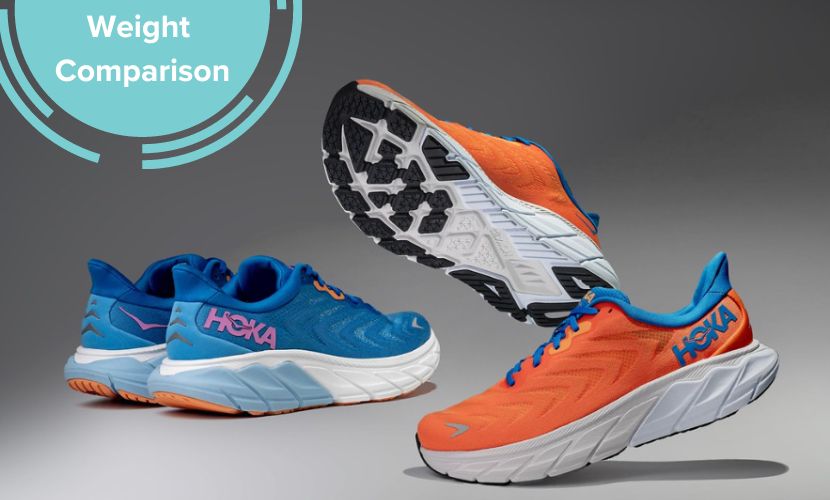
Regarding contrasting Hoka Gaviota and Arahi, weight is one of the most efficient factors to examine. A shoe’s weight can influence an athlete’s performance, particularly during long runs.
The Hoka Gaviota is more heavier than the Arahi. For the men’s edition, the Gaviota weighs approximately 11.3oz; on the contrary, the Arahi weighs 9.7oz. For the women’s version, the Gaviota weighs approximately 9.3oz, and the Arahi weighs around 7.8oz.
The Arahi may be your finer option if you prioritize a feathery shoe. However, if you don’t mind a moderately heavier shoe, the Gaviota can offer more padding and support during your runs.
Both shoes offer a 5mm drop, which is mild and typical for Hoka shoes. The Gaviota has more computed “Spring” in the shoe, having 3mm in the men’s and 2mm in the women’s. The Arahi, on the other hand, contains less arch support than the Gaviota, making it ideal for medium and deeper arches.
Overall, weight is important when selecting between the Hoka Gaviota and Arahi. Discovering the right balance between weight, padding, and support is critical to verify a snug and efficient running experience.
Hoka Gaviota Vs. Hoka Arahi: Which Runs True To Size?
Concerning selecting the right running shoe, detecting the ideal fit is crucial. In this part, we’ll contrast the sizing of the Hoka Gaviota and the Hoka Arahi to aid you in finding which one runs true to size.
Sizing Chart Of Hoka Gaviota
The Hoka Gaviota is accessible in both men’s and women’s sizes. According to our findings, the shoes are structured to fit true to size. However, some athletes have mentioned that the shoes run moderately large so it may be worth testing on a half-size smaller than your regular size.
The following is the sizing table for the Hoka Gaviota:
| US Men’s Size | US Women’s Size | UK Size | EU Size |
| 7 | 8.5 | 6.5 | 40 |
| 7.5 | 9 | 7 | 40 2/3 |
| 8 | 9.5 | 7.5 | 41 1/3 |
| 8.5 | 10 | 8 | 42 |
| 9 | 10.5 | 8.5 | 42 2/3 |
| 9.5 | 11 | 9 | 43 1/3 |
| 10 | 11.5 | 9.5 | 44 |
| 10.5 | 12 | 10 | 44 2/3 |
| 11 | 12.5 | 10.5 | 45 1/3 |
| 11.5 | 13 | 11 | 46 |
| 12 | N/A | 11.5 | 46 2/3 |
| 12.5 | N/A | 12 | 47 1/3 |
| 13 | N/A | 12.5 | 48 |
| 14 | N/A | 13.5 | 49 1/3 |
| 15 | N/A | 14.5 | 50 2/3 |
Sizing Chart Of Hoka Arahi
The Hoka Arahi also comes in both men’s and women’s sizes. We found that, the shoes are structured to fit true to size. However, several athletes have mentioned that the shoes run moderately small so it may be worth testing on a half-size larger than your normal size.
The following is the sizing chart for the Hoka Arahi:
| US Men’s Size | US Women’s Size | UK Size | EU Size |
| 7 | 8.5 | 6.5 | 40 |
| 7.5 | 9 | 7 | 40 2/3 |
| 8 | 9.5 | 7.5 | 41 1/3 |
| 8.5 | 10 | 8 | 42 |
| 9 | 10.5 | 8.5 | 42 2/3 |
| 9.5 | 11 | 9 | 43 1/3 |
| 10 | 11.5 | 9.5 | 44 |
| 10.5 | 12 | 10 | 44 2/3 |
| 11 | 12.5 | 10.5 | 45 1/3 |
| 11.5 | 13 | 11 | 46 |
| 12 | N/A | 11.5 | 46 2/3 |
| 12.5 | N/A | 12 | 47 1/3 |
| 13 | N/A | 12.5 | 48 |
| 14 | N/A | 13.5 | 49 1/3 |
| 15 | N/A | 14.5 | 50 2/3 |
Overall, the Hoka Gaviota and the Hoka Arahi are constructed to fit true to size. However, several athletes have mentioned that they run moderately large or small, so it’s always a perfect idea to check on several distinct sizes to find the correct one.
How does the Hoka Gaviota 5 compare to the Hoka Arahi 6?
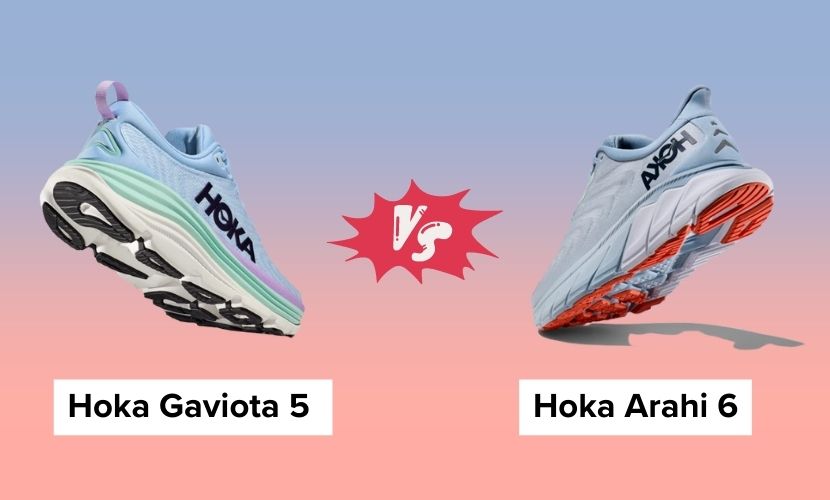
Hoka One One has two famous choices regarding stability running shoes: the Gaviota and the Arahi. The newest editions of these shoes are the Gaviota 5 and the Arahi 6. Both shoes are constructed to offer support and steadiness to athletes who overpronate. The following is how the Gaviota 5 contrasts with the Arahi 6:
Weight
The Hoka Arahi 6 is more delicate than the Gaviota 5. The Arahi 6 weighs approximately 9.7 ounces for men and 7.8 ounces for women; on the other hand, the Gaviota 5 weighs around 11.3 ounces for men and 9.3 ounces for women.
The Arahi 6 might be the finer option if weight is an issue.
Cushioning
The Hoka Gaviota 5 has more padding than the Arahi 6. The Gaviota 5 contains a 32mm stack height in the heel and a 27mm stack height in the forefoot; conversely, the Arahi 6 comprises a 27mm stack height in the heel and a 22mm stack height in the forefoot. If you’re searching for a shoe with more padding, the Gaviota 5 might be the superior choice.
Stability
Both shoes are structured for stability, but they use distinct technologies. The Hoka Gaviota 5 utilizes J-Frame technology, a sturdy foam that covers around the heel and elongates through the midfoot for additional support. The Hoka Arahi 6 utilizes various technology called the Early Stage Meta-Rocker, a moderately curved sole that aids in guiding the foot through the stride cycle.
Price
The Hoka Gaviota 5 is moderately more costly than the Arahi 6. The Gaviota 5 retails for $150; on the contrary, the Arahi 6 retails for $130. If cost concerns you, the Arahi 6 might be the finer option.
Overall, the Hoka Gaviota 5 and the Arahi 6 are remarkable stability running shoes. The Gaviota 5 contains more padding and uses J-Frame technology for extra support; conversely, the Arahi 6 is feathery and utilizes Early Stage Meta-Rocker technology.
What are the differences between Hoka Gaviota 5 and Hoka Arahi 7?
When contrasting Hoka Gaviota 5 and Hoka Arahi 7, there are some dissimilarities to consider. The following are the major dissimilarities between the two running shoes.
Design and Fit
One of the basic differences between the Hoka Gaviota 5 and Hoka Arahi 7 is their pattern and fit. The Gaviota 5 contains a more customary running shoe design, having a broader toe box and a more roomy fit overall.
The Arahi 7, on the other side, has a more sleek pattern with a more comfortable fit that embraces the foot for a safer feel.
Stability and Cushioning
Both the Hoka Gaviota 5 and Hoka Arahi 7 are structured as stability running shoes, but they vary in the case of their standard of stability and padding. The Gaviota 5 is constructed for moderate to acute overpronators; conversely, the Arahi 7 is engineered for mild-to-moderate overpronators.
The Gaviota 5 also contains more padding than the Arahi 7, making it a good option for athletes requiring additional support and ease during their workouts.
Weight
Another chief dissimilarity between the Hoka Gaviota 5 and Hoka Arahi 7 is their weight. The Gaviota 5 is more heavier than the Arahi 7, weighing approximately 11.3 ounces for men and 9.3 ounces for women.
The Arahi 7, on the other side, weighs around 9.6 ounces for men and 7.8 ounces for women. This creates the Arahi 7 a good option for athletes who prefer lightweight shoes.
Drop
The Hoka Gaviota 5 and Hoka Arahi 7 contain a 5mm drop, which is comparatively low compared to other running shoes. This deep drop aids in encouraging a more natural stride and can be helpful for athletes who desire to upgrade their running form.
In conclusion, the Hoka Gaviota 5 and Hoka Arahi 7 are amazing choices for runners requiring steadiness and support during their workouts. However, they vary in pattern and fit, stability and padding, weight, and drop.
Hoka Gaviota Vs Arahi: Which is best for runners?
Hoka Gaviota and Arahi are two famous running shoes from Hoka One One. Both shoes are structured to offer stability and aid to runners, but they vary in some major aspects. In this part, we will contrast Hoka Gaviota and Arahi to aid you in selecting which one is perfect for you.
Weight and Cushioning
One of the key dissimilarities between Hoka Gaviota and Arahi is their weight and cushioning. The Hoka Gaviota is a heavier shoe, weighing approximately 11.3oz; conversely, the Arahi weighs 9.7oz.
The Gaviota also contains more padding than the Arahi, making it a finer option for runners prioritizing a softer ride.
Overpronation
Another factor to examine when selecting between Hoka Gaviota and Arahi is overpronation. The Arahi is structured for mild-to-moderate overpronators; on the contrary, the Gaviota is for moderate to acute overpronators. If you overpronate, the Gaviota is a superior option.
Support
Both shoes offer Hoka’s J-Frame, which gives extra support while running. However, the Gaviota has more aid than the Arahi, making it a finer choice for athletes requiring extra steadiness and support.
Price
Price is also a factor when selecting between Hoka Gaviota and Arahi. The Gaviota is more expensive than the Arahi, so if you are on a budget, the Arahi is ideal.
In conclusion, Hoka Gaviota and Arahi are amazing running shoes but vary in weight, padding, overpronation, support, and price.
Are Hoka Gaviotas suitable for people with flat feet?
Hoka Gaviota is a steady running shoe that gives effective aid for overpronation. Overpronation is an ordinary issue among runners with flat feet, where the foot spins inward massively during the foot strike. This can cause different foot injuries and discomfort.
The Hoka Gaviota 3 is an amazing choice for people with flat feet. It provides a stable platform and a stabilized standard of padding that can aid in lessening the effect on the feet and joints. The shoe offers a J-Frame midsole technology that gives dynamic steadiness and instructs the foot during the stride. The J-Frame midsole is structured to provide support and steadiness without compromising the shoe’s stretchability.
Moreover, the Gaviota 3 has a broad base that offers a snug fit for people with flat feet. The shoe’s upper is designed of an absorbent material that maintains the feet cool, fresh, and dry during long runs. The shoe’s insole is portable, permitting runners to personalize the fit and support according to their requirements.
However, it is necessary to mention that the Gaviota is one of many Hoka shoes adaptable for people having flat feet. The Hoka Arahi 6 is another steady shoe that gives effective aid for overpronation. On the other hand, the Arahi has less arch aid than the Gaviota, and it is ideal for medium and deeper arches.
Overall, Hoka Gaviotas is adaptable for people with flat feet. They provide a stable platform, balanced padding, and effective support for overpronation. However, athletes should always refer to a podiatrist or a running expert before buying the latest pair of shoes.
Conclusion
After contrasting the Hoka Gaviota and Arahi, it is obvious that both shoes have their versatile advantages and disadvantages. The Gaviota provides greater cushioning and is mushier, creating it an outstanding option for those who prioritize a squishier shoe. Conversely, the Arahi is sturdy and offers more steadiness, making it a great choice for those who require more support.
Concerning weight, the Gaviota is moderately more heavier than the Arahi. However, both shoes contain a similar drop and stack height, making them ideal for runners prioritizing a moderate cushioning standard.
In the case of design, both shoes provide a modish look that is sure to turn heads. The elongated Achilles’ support on the Arahi is an iconic attribute that separates it from the Gaviota. Furthermore, Gaviota’s Meta-Rocker technology gives a smooth ride; conversely, Arahi’s J-Frame technology gives remarkable support.
Both shoes are outstanding options for athletes who require stability and aid. It is suggested that athletes test on both shoes and detect which one feels finer for their feet.
Read more on:

